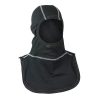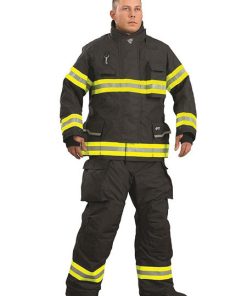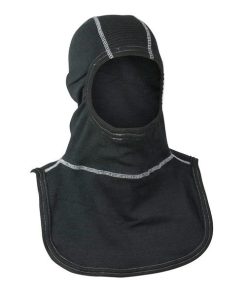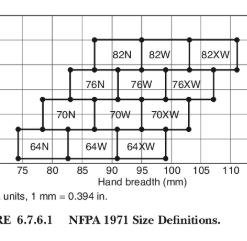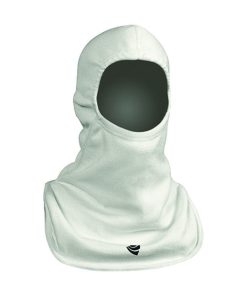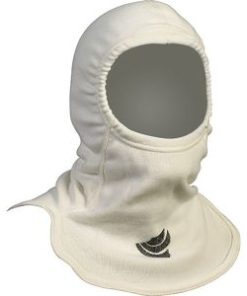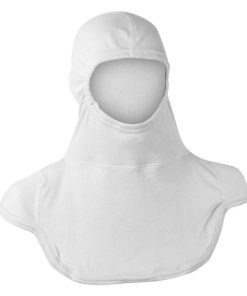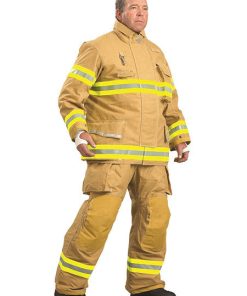INNOTEX GRAYTM Hood 25 with PBI
The INNOTEX GRAY™* Hood 25 with PBI is a particulate blocking hood designed to address this very issue. It helps to dramatically reduce the risks of carcinogenic particulate contamination while maintaining air permeability.
Developed to meet the proposed requirements of NFPA 1971, 2018 edition, the particulate blocking layer blocks carcinogenic particulates 0.1 μm to 1.0 μm that are found in the combustion of structural fires by greater than 98%. Yet, that same layer also allows for air permeation, which is essential to reduce the risk of increased core temperature.
THE INNOTEX GRAY™ HOOD 25 USES THE SAME 3-LAYER APPROACH AS TURNOUT GEAR.
LAYER 1: The exterior layer is a 20%/80% PBI/Lenzing blend (8 oz/yd2), providing good, reliable performance.
LAYER 2: The middle layer consists of a proprietary version of Stedair® PREVENT. This layer blocks carcinogenic particulates 0.1 μm to 1.0 μm (microns) by greater than 98%. NFPA 1971, 2018 edition will require a minimum of 90%.
Unlike some barriers, it is air permeable, which means air freely passes through it, letting body heat dissipate
and helping reduce the risk of increased core temperature. This layer also offers a 100% coverage throughout the entire hood.
LAYER 3: The inner layer is a 100% FR viscose multi-filament liner. It gives a noticeably cool feeling when worn and has superior wicking abilities that spread out moisture to allow for quicker drying. The liner material is also less prone to piling than a standard Nomex/Lenzing material.
Layers 2 & 3 are laminated together, reducing the bulk of multiple layers and increasing comfort.
CANCER IS A GROWING CONCERN AS MORE AND MORE FIREFIGHTERS ARE DIAGNOSED WITH THIS DISEASE THAN EVER BEFORE.
A recent multi-year study by the CDC on cancer among U.S. firefighters (1) showed
higher rates of certain types of cancer than among the general U.S. population. The
study also provides evidence that these higher rates are directly related to
occupational exposure.
In another study “(Daniels, 2014), a pooled cohort of 29,993 firefighters was followed
over a span of nearly sixty years and it was found that overall, firefighters developed
nine percent more cancers of all types, and were 14% more likely to die of cancer than age-matched controls in the general population.”
A crucial factor: ‘’Fires generate toxic combustion products, some of which are known or suspected to cause cancer. Fire fighters may be exposed to these toxins as a consequence of their job duties.’’
‘’These intermittent exposures can be intense, and short term exposures can be high for respirable particulate matter and for some carcinogens, notably benzene,
benzo[a]pyrene, 1,3-butadiene, and formaldehyde.’’ (4) But also “polycyclic aromatic
hydrocarbons, formaldehyde, dioxins, polychlorinated biphenyls, vinyl chloride,
acrolein, asbestos and heavy metals such as lead, arsenic, and cadmium.” (2)
Another crucial factor is that when the body heats up its pores open up to 400% for
every 5 degrees in an effort to cool the body down. (5) This readily allows any toxic
combustion products to enter the human body.
| Weight | N/A |
|---|---|
| Dimensions | 1 × 2 × 4 in |
| Size | Medium/Large, Extra Large |
Related products
Turn Out Gear
Hoods
Hoods
Turn Out Gear






